SEO content optimization done right can 10x your organic traffic and revenue.
I’ve been optimizing content for my blogs and countless clients for over 10 years now. Some SEO optimization strategies that I thought clicked only worked for a while. Over time, I sifted through what readers found valuable and what they didn’t.
With those years of experience, I now have a tested step-by-step SEO content optimization guide ready to share with you. Discover actionable steps you can take and the tools you need to master so you can create content that search engines and readers will love.
Let’s dive in.
What Is Content Optimization For SEO?
SEO content optimization is the art of refining and enhancing your content to perfectly align with both search intent and your target audience’s needs. Content optimization for SEO is about crafting comprehensive content that resonates, answers questions, and provides value.
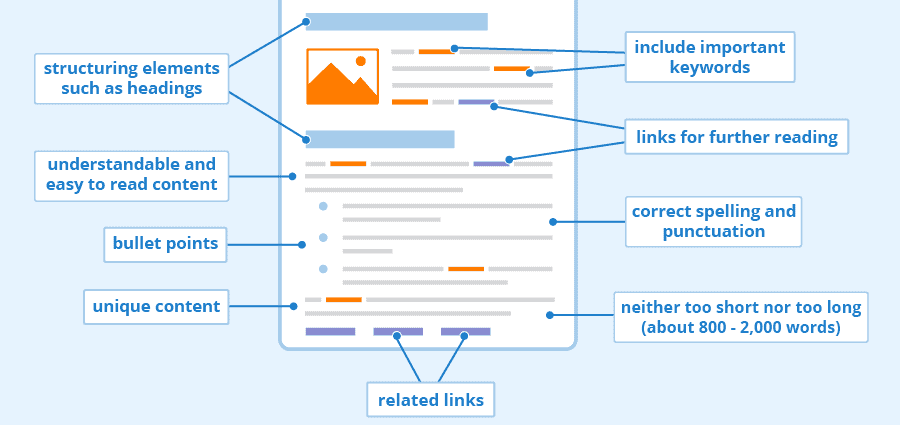
It gives your content the edge it needs to stand out in the crowded digital landscape. Without it, it’ll be hard to have search engines rank your page prominently.
But when you optimize your content, you identify opportunities that drive more organic traffic, user engagement, and revenue. This prevents your content from fading into obscurity, but instead, launch your site for optimum online visibility and growth.
Following that, it’s time to get into the nitty-gritty and go through a comprehensive guide on how you can optimize content for SEO. It’ll help you find your footing to enhance your content creation process.
How To Effectively Optimize Content For SEO: A Step-By-Step Guide
Optimizing content isn’t just about getting seen by search engines but more about being relevant and valuable.
But to do that, you have to get into this mindset:
Content optimization for SEO isn’t just a one-time big effort. This takes consistent work.
Follow these 9 proven and tested steps to make the whole process more seamless for you. As you consider each step, identify the tools to use and the specific features you need to master using.
1. Build A Strong Topical Research System
With in-depth search term research, you uncover not just target keywords but also related search terms to elevate your content. Think of it as giving your blog post a richer flavor, sprinkled with terms your audience actively searches for.
Incorporating these search terms helps search engines understand your content’s context and relevance. So invest in a strong search term research system and watch your content resonate more powerfully with both readers and search engines.
How do you do this?
Start with a search term deconstruction using Ahrefs Keyword Explorer and Google Keyword Planner, as well as looking at your competitors’ sites. This will help you identify the hubs and analyze if those are big enough to have relevant sub-hubs.
For instance, “digital marketing” is a primary hub encompassing sub-hubs like SEO, SMM, SEM, and PPC. Each of these sub-hubs is expansive, warranting its own set of related content.
Then, craft a dynamic topical map for your website. Strategically set tiers for topics, rooted in a clear hierarchy. In doing this, you not only guarantee a comprehensive approach to each subject but also fortify your site’s topical authority.
Using the topical map, you can effortlessly categorize and group search terms by themes. This clarity offers a bird’s-eye view of how different terms interrelate. It paves the way for strategic internal linking, connecting related content, and enhancing user navigation.
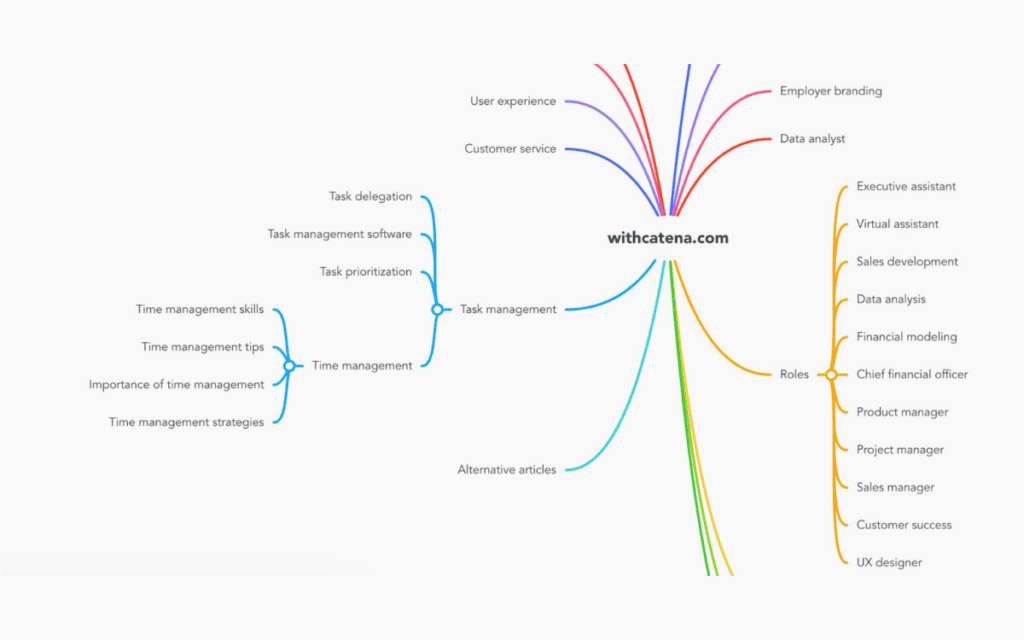
Additionally, this helps you identify the main topics and subtopics relevant to your niche. Having this visualization also helps you develop targeted content that covers a wide range of related keywords.
Once you’re done with the topical map, you can find relevant keywords based on the hubs, a.k.a your broad search terms.
Here are the tools we consistently use and have proven to be effective:
| Tools | What Makes Them Effective |
| Ahrefs Keyword Planner | Offers volume and difficulty insight, as well as keyword ideas for your content. |
| Google Trends | Lets you track specific search terms, highlighting their popularity shifts, and helping you spot and leverage trending terms. |
| Google Search | Has autocomplete and “People Also Ask” features that suggest related queries, showing you popular terms and phrases others use. |
| Google Keyword Planner | One of Google’s free tools. It offers insights into search volume, competition, and tailored suggestions for your industry. |
| AnswerThePublic | Visualizes search queries, offering a goldmine of related search terms. |
2. “Cranking Out Content” Vs “Providing True Value For Real People”
In SEO’s ever-evolving world, one truth remains: only the best content wins.
What that means is to NOT just churn out blog posts for the sake of simply having content on your website. Optimizing content for SEO is about crafting high-quality content that genuinely helps your readers.
Google launched the “helpful content update” to encourage businesses to focus on “people-first content” rather than always focusing on appeasing search engine algorithms.
Here’s a short questionnaire to help you identify whether your content meets Google’s people-first approach:
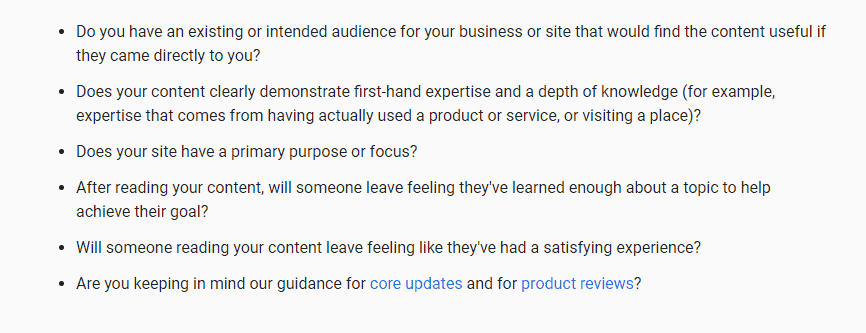
You’re on the right track if your answer to all the questions is yes.
2.1. In-Depth Discussion
Understand what you’re discussing and present it comprehensively. Start your content writing process with a thorough research. This will help you determine audience questions and give you a chance to answer them.
Do this with Ahrefs’ competitor content gap analysis. It lets you pinpoint missing subtopics searchers crave. Then, brainstorm and create content that outshines the rest.
However, remember that diving deep into a topic doesn’t mean overwhelming your readers with jargon or keyword stuffing. Again, content is for your target audience, not for Google or other search engines.
2.2. Content Structure
Did you know that 47% of articles with advanced headings are in organic top-ranking results?
When creating content, the structure is your best friend. Your content should have a logical flow and not just be randomly pieced together.
Here’s how to structure your content:
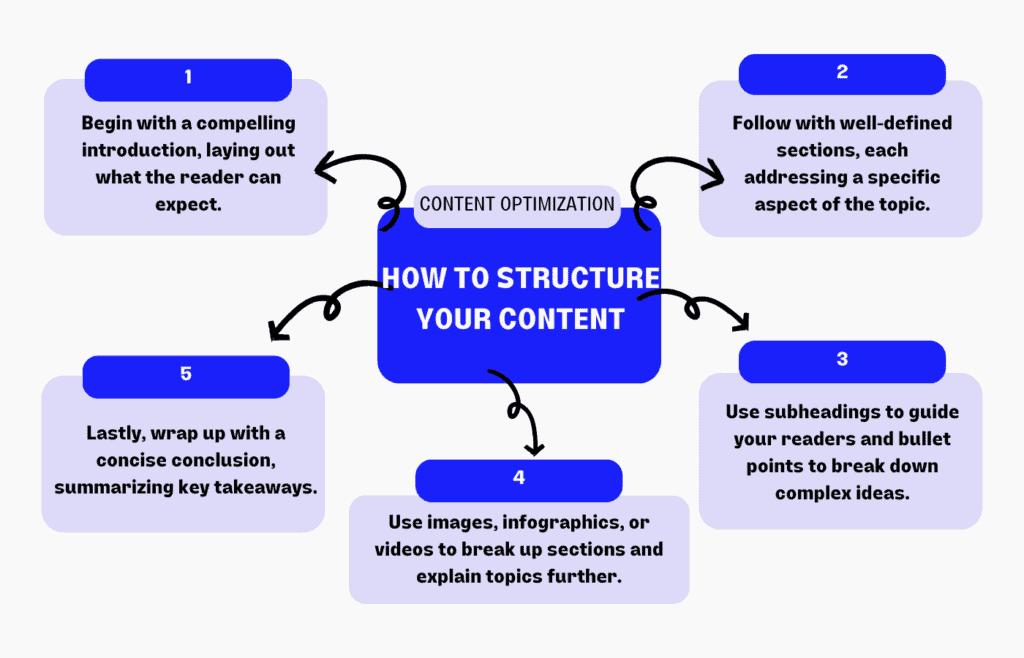
3. Optimize Your Content For Search Intent
Answering your target audience’s search intent aligns you with what users genuinely seek.
How do you nail this tactic?
- Research your target keyword: Dive into your target search term’s search results. What type of content dominates? Guides, comparisons, or reviews?
- Study top-ranking pages: Examine relevant websites that rank high. What are they offering that you’re currently missing?
- Analyze user behavior: Google Analytics and SEMrush shed light on user behavior. Which pages hold attention? Which ones have high bounce rates?
Take this 15+ Best Sites To Hire Great Remote Developers – 2023 Guide article we optimized for Aloa:

It ranks #1 for the search term “hire remote developers” and rakes in 1,500 visits/mo.
So, what’s the secret?
It perfectly aligns with user intent. Users searching for “hire remote developers” aren’t looking for a how-to guide or a single solution. They want a comparison of options where they can look for the developers they need, which this blog content delivers in spades.
Tailoring your web pages and content to match search intent increases your chances of getting to the top spot and makes sure your audience finds genuine value in every word.
4. Build Topical Authority
Establishing yourself as a niche expert helps search engines recognize your website and reward you with higher rankings.
How do you become this beacon of knowledge in the vast content sea?
Leverage the hub-and-spoke method – a game-changer for optimizing content.
For search terms:
- Hub: This is a broader, often more competitive search term. For instance, “Digital Marketing” could be a hub search term.
- Spoke: These are more specific, long-tail search terms branching from the hub. Using the above example, spoke search terms could be “Email Marketing Tactics,” “SEO Best Practices,” or “Social Media Strategies.”
In terms of content:
- Hub: This is the comprehensive, cornerstone content that covers a broad topic in depth. It’s typically a long-form piece that thoroughly overviews a primary subject. The hub is the central point from which various related topics (spokes) branch out.
- Spoke: These are individual blog posts that delve into your primary keyword’s subtopics. They’re detailed, offering specific insights and always linking back to your hub, reinforcing its authority.
Why is this a vital tactic among others?
You can interlink your hub and spoke topics since they’re relevant to each other. It’ll also let you identify opportunities for long-tail search terms. These often have lower competition (below 30% keyword difficulty) and can drive niche, highly engaged traffic.
From the broad overview in the hub to its nuanced details in the spokes, you signal to search engines that you’re an authority on the subject.
Case Study Overview
Aloa had content issues. Their posts weren’t bringing in new leads and customers.

Here’s what we did:
- Implemented the hub-and-spoke method.
- Increased the semantic relevance for competitive transactional “hub” search terms.
- Leveraged the less competitive informational “spoke” queries to build greater content depth.
For instance, we established “software engineer” as one of our central hubs. Branching from this hub, we had spokes like “software engineer resumes” and “software engineer review questions.” These specific topics complemented the central hub and bolstered its authority.
The results within 16 months:
- 442% increase in organic search traffic.
- 32,516 search terms indexed.
- Monthly traffic value increased from $5,194/mo to $126,198/mo.
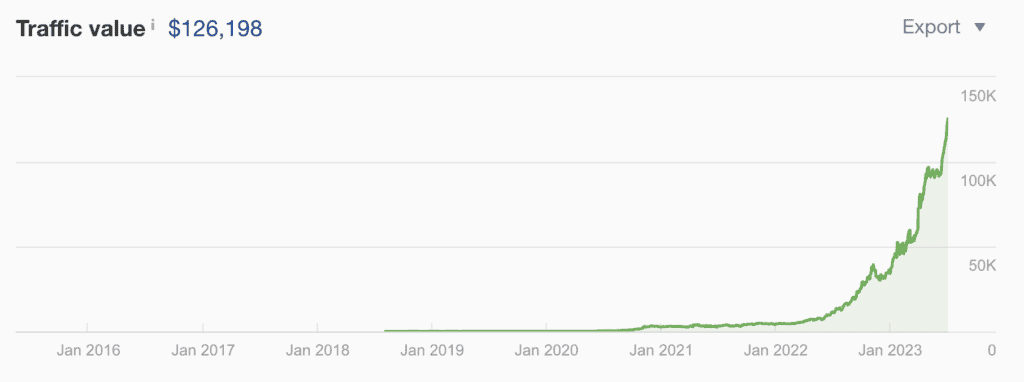
The best part? Aloa’s monthly sign-up grew 318%.
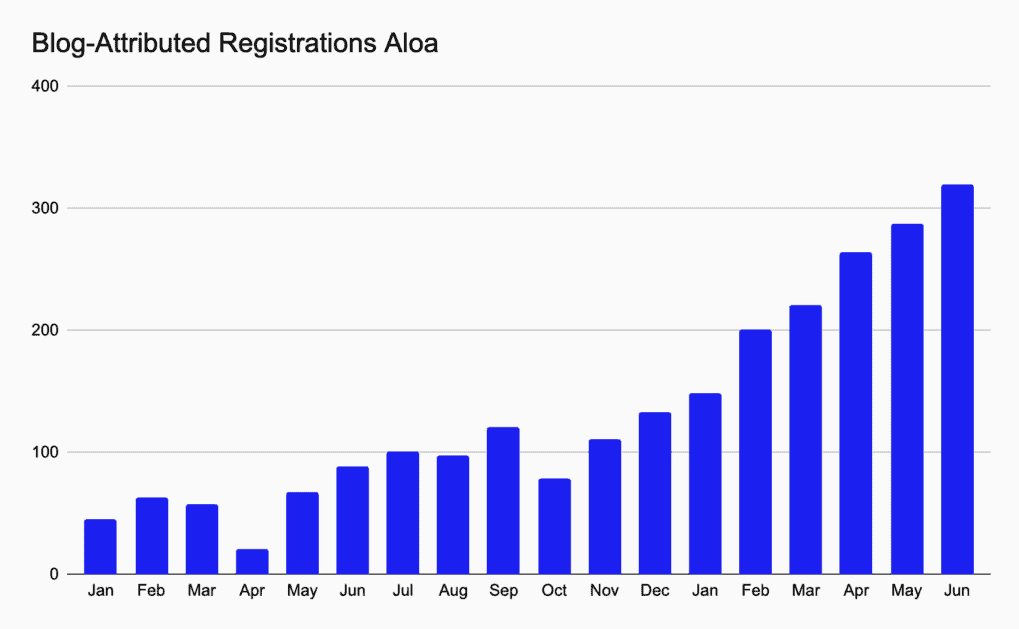
5. Build Internal Links (A Lot)
Internal linking refers to interconnecting pages within the same website using hyperlinks. A strong internal linking structure is like laying down roads within a city. It guarantees smooth navigation for both users and search engine bots, amplifying your SEO efforts.
How does simply linking relevant content within your website do that?
5.1. Crawling & Indexing
Internal links act like pathways for search engine crawlers like Googlebot. It scans and indexes content, following links to understand site structure and updates making sure fresh content appears in Google search results.
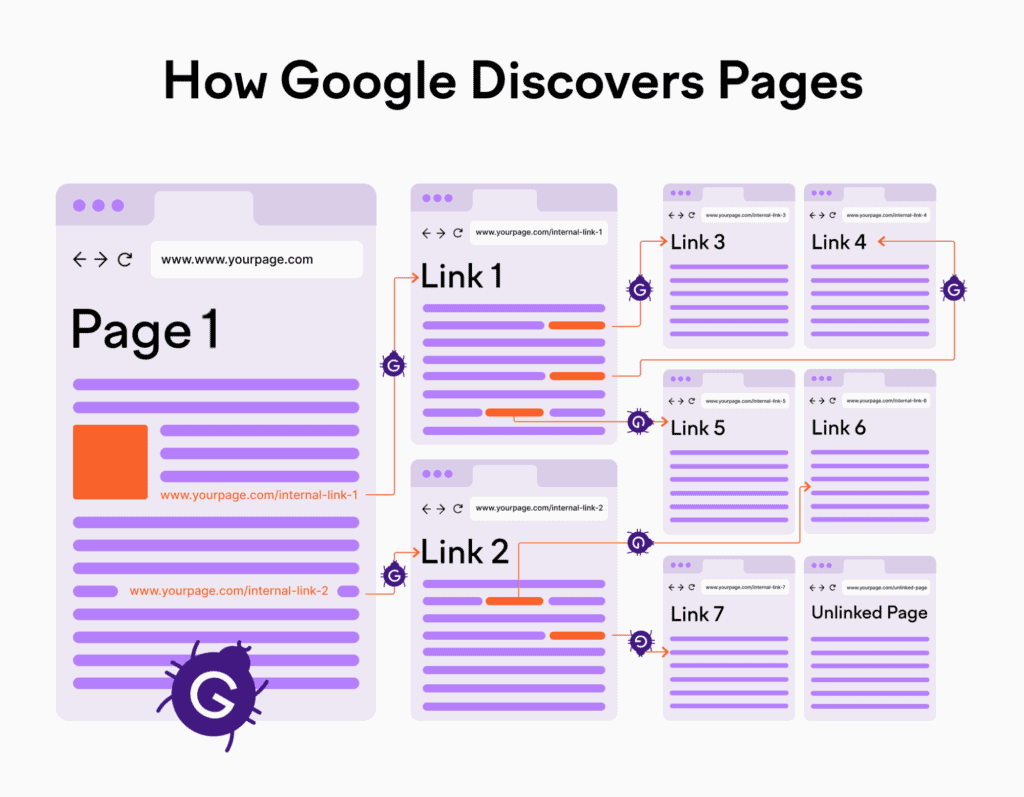
When you link one article to another, you’re guiding these bots through your site. This helps search engines discover new pages or understand the context and relationship between your existing content. A well-linked site boosts its visibility in search results.
5.2. User Experience
Internal links guide your users to relevant content, enhancing their on-site experience. This makes users stay longer and engage more on your site.
For instance, let’s say you have a new blog post about healthy recipes. Your readers scroll and find links to related articles on nutrition statistics and meal planning. Intrigued, they click and explore your website further. The more engaged they are, the less likely for them to leave your site. This often translates to lower bounce rates and higher conversions.
5.3. Distributing Page Authority
Page authority is a measure of how valuable a specific page is in search engines’ eyes. Think of your site’s collective authority as a pie, each slice represents a page. Internal links act as servers, ensuring every guest (page) gets a piece.
So, when one of your high-authority pages links to another content on your site, it shares its strengths, potentially boosting the linked page’s ranking.
For instance, let’s say you have a popular article about “Gardening Techniques” that search engine crawlers love and rank high. Then, you wrote a new post about “Best Plants for Beginners.”
Linking from the popular article to this new post lets you pass on some of that established authority to the newer content. This helps the new article gain traction faster, signaling to search engines its relevance and importance.
To help you further with building your internal linking structure, here are key points to remember:
- Context is key: Make sure that the links you create are contextually relevant. Don’t just link for linking’s sake; it should add value for the reader.
- Use descriptive anchor text: Instead of generic phrases like “click here,” use descriptive anchor text that gives both users and search engine bots a clear idea of the linked content’s topic.
6. A+ Grade Your Content
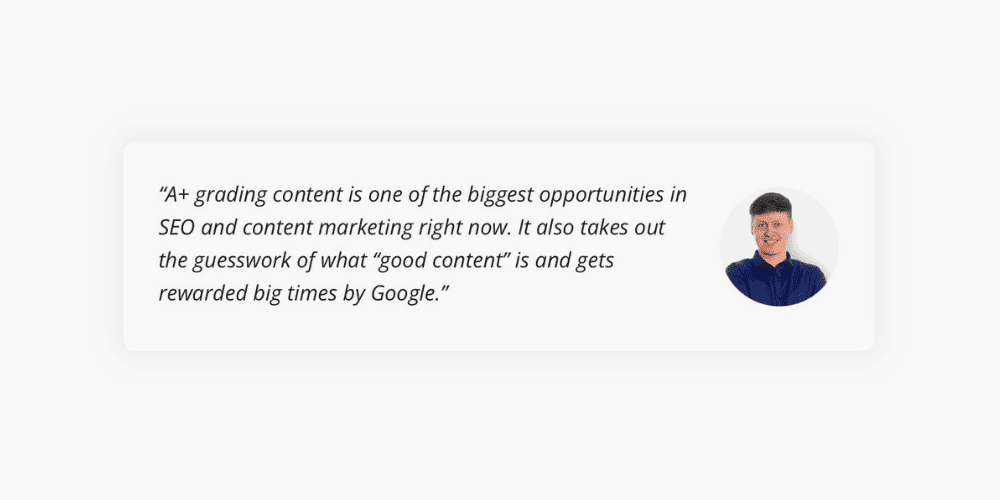
Getting an A+ grade for your content isn’t just about bragging rights; Google and others prioritize content that resonates with its users.
This is when the “People-First Content” comes into play. This refers to content that answers search queries and demonstrates expertise. Your blog content should evoke emotions, answer questions, and engage readers naturally.
Google’s algorithms evolved to detect and prioritize this type of content. Why? Because content that engages users signals its quality and relevance.
Search engines don’t want you to create content for the sake of their algorithms. This includes articles that don’t add value, aren’t related to your niche, or don’t exhibit authority.
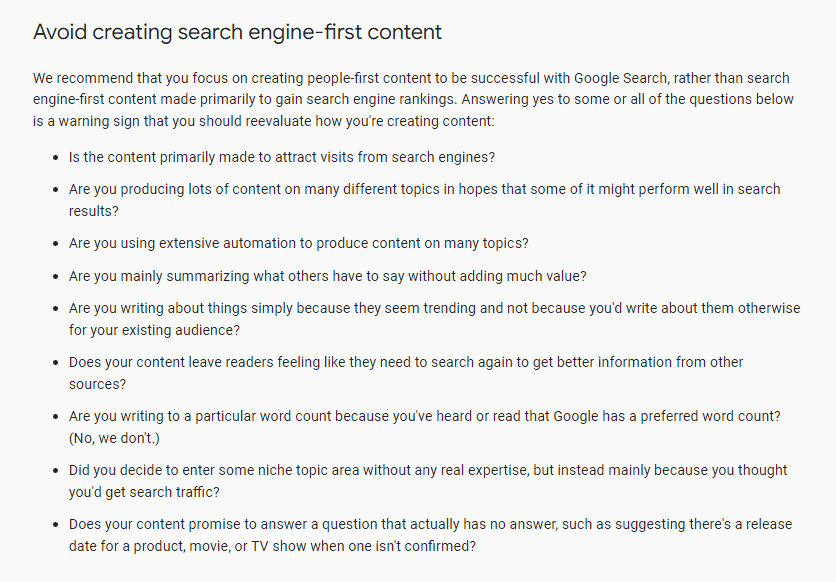
How do you or your content creators make sure your content is A+?
Use content grading tools like Frase and SurferSEO.
6.1. Frase
This platform analyzes top-performing content on the search engine results page. It’ll give you relevant keywords that top-ranking site pages used which you can incorporate within your blog post.
It also suggests the keyword density for each search term telling you how many times you should use that term within your article.
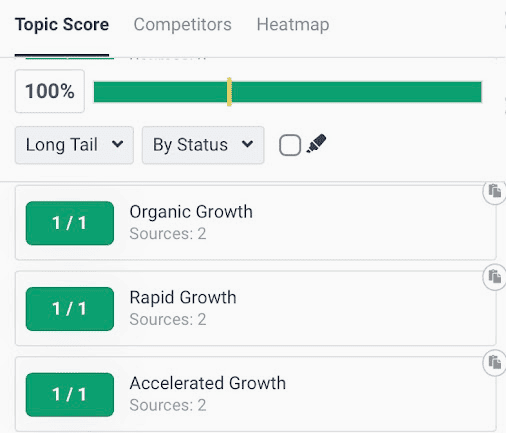
6.2. SurferSEO
This has the “Content Editor” feature that provides real-time suggestions as you draft, ensuring your content aligns with proven SEO ranking factors.
It analyzes top-performing pages, then offers insights on which search terms to use, how to structure your content with suggested heading titles, and other key elements like word count and image usage.
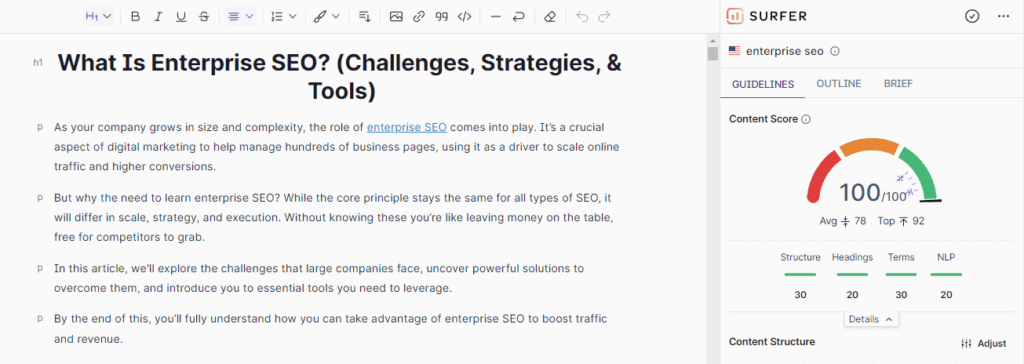
Moreover, to further ace your A+ content strategy, avoid or limit using redundant phrases, overused adjectives, or sentences that lack a natural flow because they easily get detected as AI, even if they aren’t.
Here are examples of what to avoid:
- Be able to
- In order to
- It’s crucial to
- The ability to
- It’s essential to
- It’s important to
- It’s suggested to
- Leading to/lead to
So, if you’re writing a piece on “Effective Enterprise SEO Strategies,” instead of just listing tactics with 1 paragraph each, weave in examples or actual results backed by numbers.
Then, you can use Frase to make sure your search term placements align with top-ranking articles. Or you can run it through SurferSEO’s Content Editor to fine-tune on-page elements.
Blending genuine, human-centric writing with the tools’ analytical prowess lets you set the stage for content that shines, both for your readers and on the search engine results page.
7. Create Media-Rich Content Assets
In the content marketing world, leveraging media-rich content assets is a powerful strategy because today’s audience craves more than just text. They want a dynamic, engaging experience when they land on a web page. Don’t make them read a textbook.
Here are the media content you should use:
| Media Format | How They Help |
| Videos | Boosts understanding and retention. A well-produced video can explain complex topics in minutes. |
| Infographics | Simplifies data and information, making them digestible and shareable. An infographic can transform a 1,000-word explanation into a glanceable, engaging visual. |
| Statistics | Lends credibility through number-backed data. Relevant statistics bolster your claim, as well as position your content as authoritative and trustworthy. |
| Tables & Graphs | Data-heavy topics benefit from these since they present information clearly, allowing readers to quickly grasp comparisons, trends, or patterns. |
Sounds easy enough, right? But there’s a catch.
Don’t just add media for the sake of it. Each asset should amplify your message, providing additional value.
Think of it this way, a random image might make a page look good, but does it help you understand points better? Always aim for media that clarifies, exemplifies, or deepens the topic at hand.
If you’re running a financial website analyzing stock market trends, rather than overwhelming your readers with jargon-filled paragraphs, you can incorporate interactive line graphs, pie charts for market shares, and infographics on investment strategies. This media-rich content turns complex data into digestible insights, engaging even beginner investors.
8. Create A Content Checklist
Crafting a content checklist is like having a roadmap for SEO success. It makes sure every content, from blog posts to landing pages, meets essential SEO criteria before going live.
Here’s a checklist you can use for your content optimization efforts:
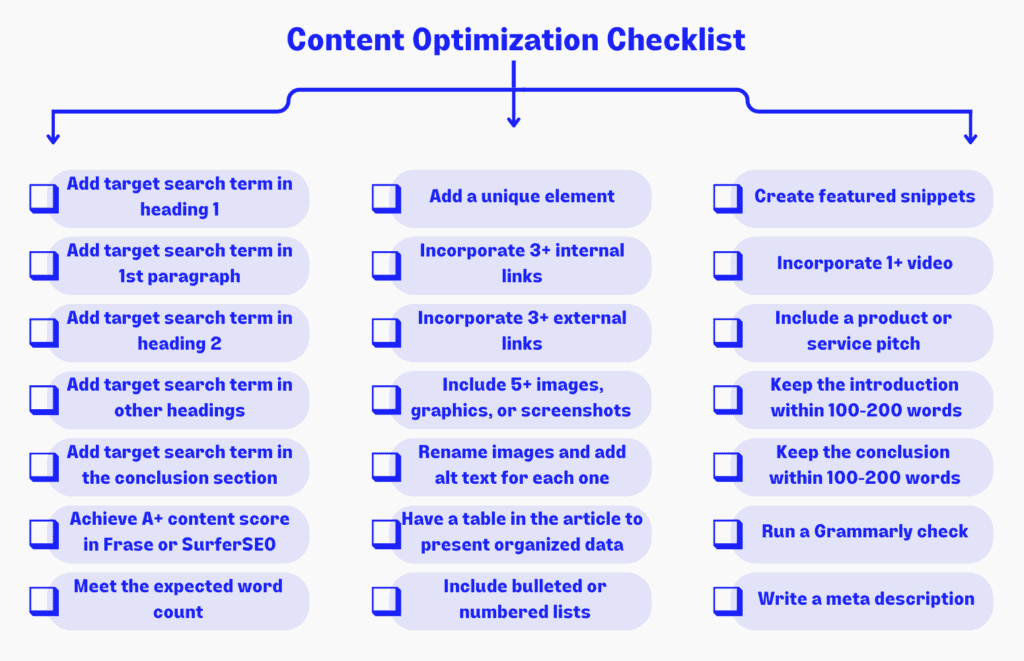
It includes everything from where your primary search term should be included. It also mentions how many internal and external links you should incorporate.
Not to mention, it reminds you to craft the finishing touches to tie up your piece like writing a meta description, adding an image description, and running a Grammarly check.
With these elements ticked off, you’re ready to prep and publish each.
9. Update Your Best-Performing Content Regularly
Don’t ignore your existing content. Refreshing your top-performing content isn’t just good practice; it’s crucial to maintain and boost your search engine ranking.
It lets you stay relevant in your niche. Industries evolve and information can become outdated. Updating your content makes sure your readers always get the most current and accurate insights.
In addition, it boosts your SEO efforts. Regular updates signal that your content contains current information and is well-maintained, potentially driving more organic traffic.
Not to mention, this helps strengthen your link-building efforts. As you update, you can incorporate new internal and external links, reinforcing your content’s connectivity and authority.
This can also help get you backlinks. Updating your content helps to entice other websites to link back to yours. No authoritative sites will want to link to a post with outdated information.
How do you update your content regularly:
- Review performance: Identify which of your blog posts are consistently ranking on the first page or driving significant traffic. Use tools like Ahrefs, Google Search Console, and Moz to monitor your web page’s traffic.
- Check for freshness: Once you have your best-ranking pages list, review the ones that have plenty of statistics, facts, or any time-sensitive information.
- Optimizing links: Add new internal links to recent content and ensure external links still point to relevant, authoritative sources.
- Engage with trends: From your shortlist, identify new developments in your industry and weave them into your content.
How often do you need to review your existing content?
65% of content marketers say 2x a year. But if your niche relies on numbers and data like finance, then you can do more frequent reviews.
However, the process is yet to be completed. While informative content aligns with your SEO strategy, it’s crucial to drive action. Content marketing, beyond informing, aims to persuade and inspire readers to take desired actions. This guarantees your content doesn’t just rank but also converts.
What About Conversion?
Harnessing your SEO marketing strategy to attract site visitors is just step 1. The real win? Transforming those visitors into leads and loyal, paying customers.
That’s why every blog post should not only inform but also entice readers to engage further into the sales funnel, ensuring your efforts yield tangible business results.
However, while tools like pop-ups, banners, and in-content links can grab attention, the real magic lies elsewhere: relevancy and a strong value proposition.
A. Make Your Content Relevant
It’s not just about traffic; it’s about attracting the right traffic. When your content aligns with a reader’s needs or interests, they’re more likely to take action. Integrating relevancy into your SEO strategy ensures you’re not just casting a wide net, but catching what you aim for.
To make sure you’re crafting relevant content and offers, know your audience. Understand their needs, preferences, and pain points.
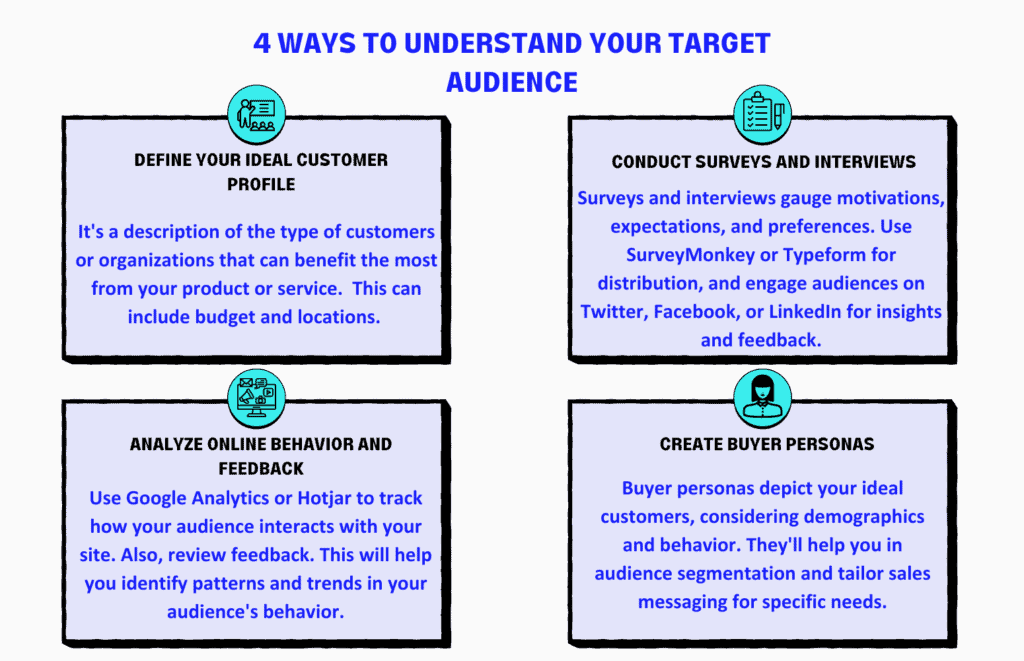
Let’s say you’re running a travel agency focused on rare adventurers. It’s easy to be swayed and just create generic content like “The Most Beautiful Places On Earth” but it doesn’t exactly hit close to home for adventurers.
But if you do “Best Places In Europe for Solo Mountain Trekkers” instead, your content hits the mark with your target audience. If solo trek enthusiasts find this content tailored to their specific needs, it increases the chances of them booking a trek with your agency.
B. Show Your Product In Action
Seeing is believing for many customers. When readers witness your product’s real-world benefits, they’re more likely to invest. This isn’t just content marketing; it’s education.
You can create a step-by-step guide or a video tutorial to demonstrate how effective it is. Additionally, host live demos to engage with your audience in real-time, answering questions and addressing concerns. You can also showcase testimonials or case studies to let potential customers hear success stories from those who’ve been in their shoes.
For example, in our Aloa case study, we detailed the company’s challenges, our solutions, and our SEO strategy’s tangible impact, showcasing results through concrete data. This comprehensive approach offers readers a clear view of our effectiveness.
Educating your audience on how your product works and its tangible benefits, you’re breaking down barriers, building trust, and paving the way for conversions.
C. Don’t Forget The Offer
Just listing down your product’s features or service offers isn’t going to cut it. It’s about presenting a compelling value proposition. Focus on highlighting what you can help customers with that your competitors can’t and making your audience feel they’re getting more than they bargained for.
To effectively spotlight your offers, start with a blog post. Dive into the problems your target audience faces and position your product as the ultimate solution. Emphasize the distinct advantages of choosing your product over competitors.
Include strong call-to-actions (CTAs). They serve as clear directives, urging readers to act immediately. When you pair a compelling offer with an assertive CTA, a sense of urgency is created, increasing the chances of turning interest into tangible action.
For example, if you’re managing a cloud storage service, a fantastic offer can be “Sign up within this week and get 50GB free storage for a year!” This addresses the need for extra storage and presents an irresistible deal that’s only available for a limited time.
Following that, let’s explore the factors that can get the attention of authoritative, relevant websites.
Make Linking To Your Content A No-Brainer
Crafting invaluable content compels other websites to naturally embed your link. Those backlinks elevate your content optimization, signaling search engines about your site’s credibility.
I. Be Authoritative
Websites prefer linking to authoritative sources because it boosts their credibility and aligns with search algorithm preferences. So, being an authority in your niche means your content becomes a go-to resource.
To demonstrate authority in your content, perform thorough research, cite reputable sources, and provide expert insights.
If you’re crafting a blog post about “Latest SEO Trends,” instead of just listing them, delve into each trend’s intricacies or reference studies. You can also quote or even interview industry leaders.
This depth not only showcases expertise but also makes your content more link-worthy. You should also showcase your credentials in your author bio to highlight your experience. This will give websites an idea of why your opinions or content provide proven methods.
II. Stir Controversy
Controversial takes spark debates, making other websites reference your views, either to support or counter them. However, beware that this tactic is a double-edged sword.
While it can amplify visibility and grow an audience, overuse can harm your credibility.
So, what should you do?
Use this method sparingly and make sure your controversial stance is well-researched and genuine. For instance, if everyone praises a popular marketing tool, but you find flaws, a well-argued critique can attract attention.
It’s okay to occasionally challenge the norm, but always prioritize authenticity and value over mere shock value.
III. Keep A Unique Voice
Sounding distinct helps your high-quality content become memorable, prompting other websites to reference you for a fresh perspective.
Additionally, this distinctiveness not only aids in content optimization but also fosters a loyal following, as readers resonate with authenticity and originality. They’re more likely to return to a site that offers a different angle.
To cultivate a unique voice, be genuine, infuse personality, and consistently communicate your values. If most industry blogs are formal, adopt a conversational tone, sprinkling in anecdotes or humor.
With that, let’s look at the tools to streamline your content optimization efforts. Include them in your toolbox, and you can create content that speaks to your target audience’s queries.
5 Essential Content Optimization Tools For More SEO Success
Content optimization is demanding, but these 5 tools will enhance your productivity, ensuring every item on your checklist is tackled efficiently. With them, you can create content that resonates, converts, and improves your authority.
a. Ahrefs
At its core, Ahrefs excels in keyword research, offering a data treasure trove to refine your SEO content. With its data, you can decide which terms to target with the best traffic potential.
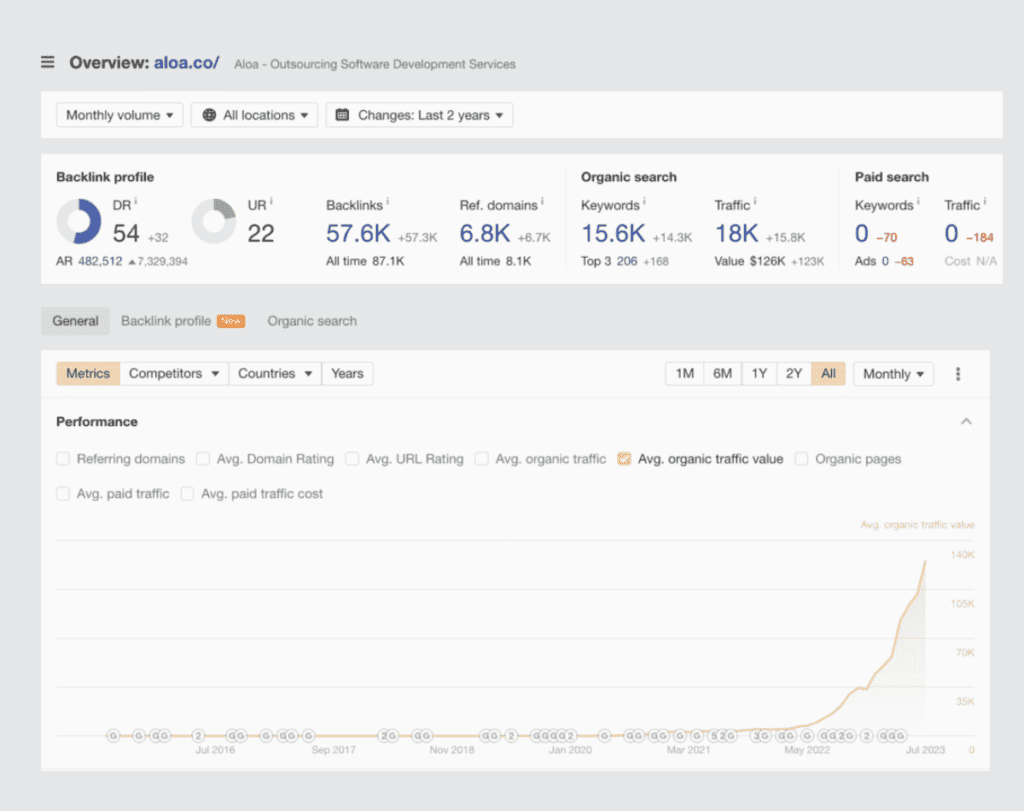
Its “Content Gap” feature lets you identify search terms your competitors rank for but you don’t, highlighting opportunities. These insights show you which terms you need to target to fill these gaps and edge out your competitors.
b. SurferSEO
This is a dynamic tool designed to elevate your content optimization game. Its standout feature for content creators is the “Content Editor” tool.
It lets you optimize your content in real-time. As you draft content, SurferSEO shows suggested relevant search terms you should incorporate, as well as their density based on the best-ranking pages on SERP. It also offers structural suggestions, including the number of headings, word count, and the amount of images you should include.
c. Link Whisper
This platform is designed to make building your internal linking structure more seamless. It suggests relevant links as you write, making sure your content is interwoven. This helps search engines understand the context and relationship between your articles.
Plus, its “Auto-Linking” feature lets you select specific search terms and designate a target URL. It then automatically creates links from all mentions of those search terms, past and future, directing them to your chosen page.
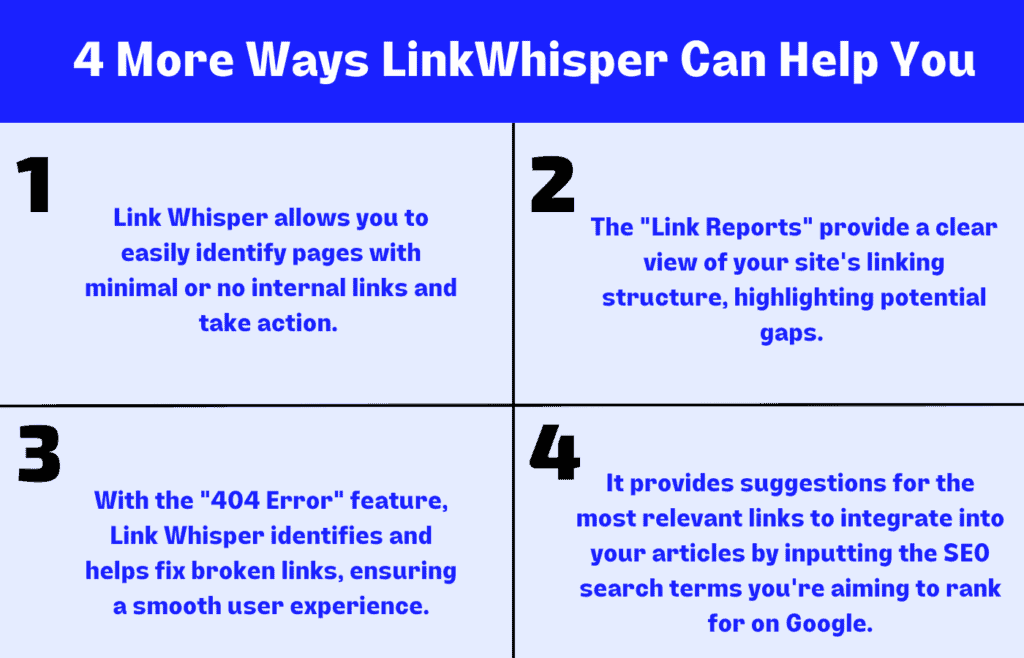
With this platform, you can strengthen your internal linking structure and make sure your content is contextually woven with each other.
d. ChatGPT4
ChatGPT4 assists in content ideation, suggesting topics and angles that resonate with your target audience. It can help you write concise and compelling meta descriptions to entice your target users to click.
Not to mention, it can help you create title tags if you’re not exactly an expert in HTML coding.
Here’s an example prompt: “Create a title tag HTML code for this article “International SEO: What It Is, Strategies, & Checklist 2023”
Here’s the result:

You don’t even have to write the code. It lets you just copy it and gives you an instruction on where to place it within your HTML.
e. AI Detector
In an era where AI-generated content is on the rise, AI Detector by ContentAtScale, helps make sure your articles are genuinely human-crafted and made with expertise rather than machines.
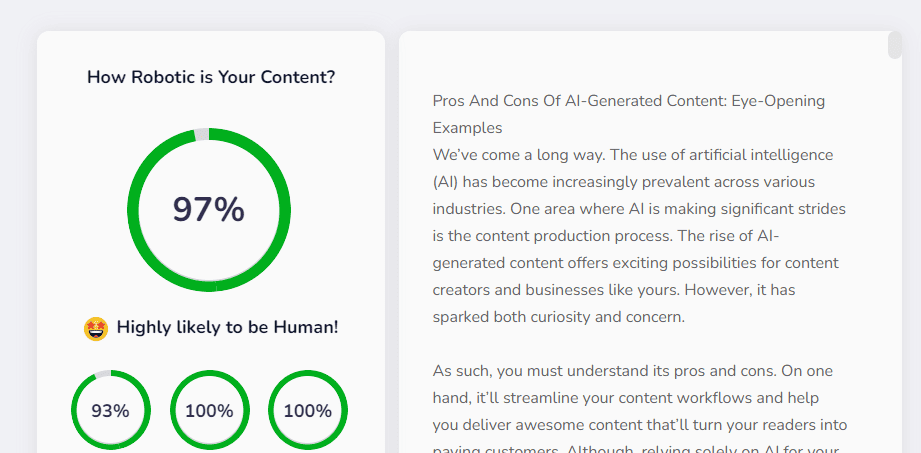
Why does this matter?
Search engine algorithms are increasingly valuing genuine, people-centric content, as it often resonates more with readers. Remember what we said about Google’s campaign for “People-First Content?”
Using AI Detector lets you safeguard your content’s integrity, making sure it’s tailored for human readers.
However, this doesn’t mean you shouldn’t use AI at all, but it’s vital to always put out content that your readers will find valuable, and Google shares the same sentiment.
How To Start Optimizing?
Content optimization for SEO starts with your target audience, so start by understanding them to craft content that addresses their needs, wants, or pain points. Then, you can dive deep into the search terms they’re using or the ones that are getting attention in your niche.
This helps you create content that aligns with your audience’s search intent. However, don’t shy away from tweaking your strategies based on the data-driven insights you get from your chosen tools.
SEO content optimization is an ongoing process and not a one-time task. So stay updated with SEO trends, be patient, and most importantly, always prioritize your readers. When you satisfy the users’ search queries, search engines take notice.
Now, that sounds like a lot of work, and it is. But what if help could be on the way?
Novum offers tested SEO-driven content strategies that drive organic traffic but more importantly, turn clicks into conversions. Get in touch today and get your free consultation call.

